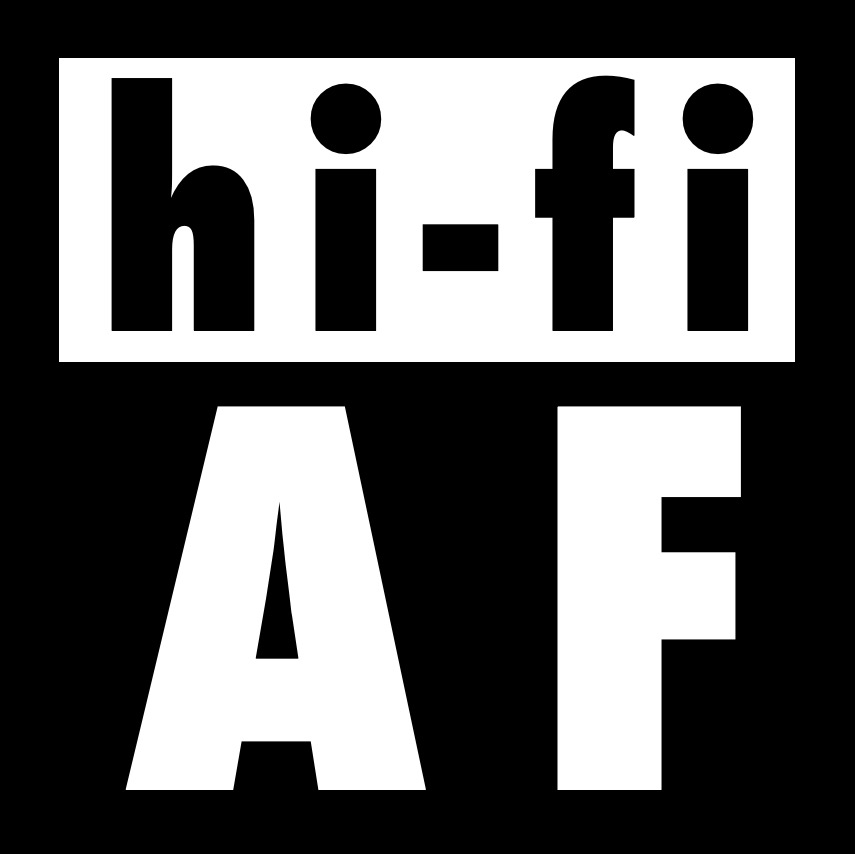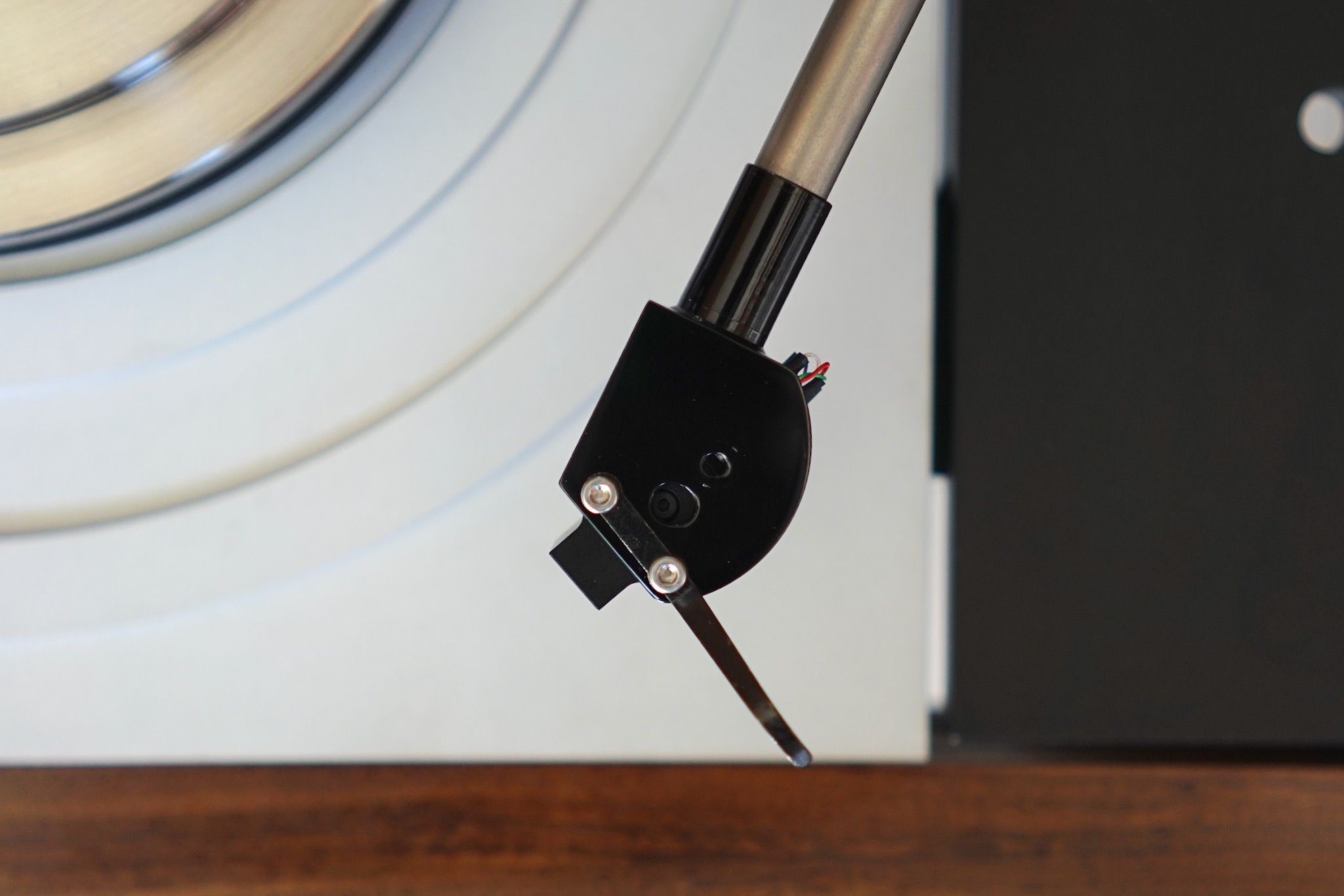LP12MF Listening Test: Dynavector XX-2 on the Javelin Tonearm
In the latest edition of the LP12 Modification Frenzy, I put the Dynavector XX-2 cartridge — first seen on the Nima, last seen on the Ekos — onto the Javelin tonearm. You can check out my listening methodology here. Full listening impressions are below. Digestible, numerical summaries of all my listening tests are here.
tl;dr
I’m starting to experience a bit of LP12MF fatigue. It takes me about 5 hours just to do the listening for a round. Then there’s several hours, sometime a whole day, installing what needs to be installed. Then there’s the business of taking and editing pictures and writing it all up. It’s my hobby, I love it, but sometimes it can feel a bit like work.
So it was with this round. I’d already done a whole week of installing, listening, and writing for the Javelin/Troika combo. I was already pretty sure I preferred the Troika to the XX-2; I would have preferred to jump straight on to testing my last tonearm, the Naim Aro.
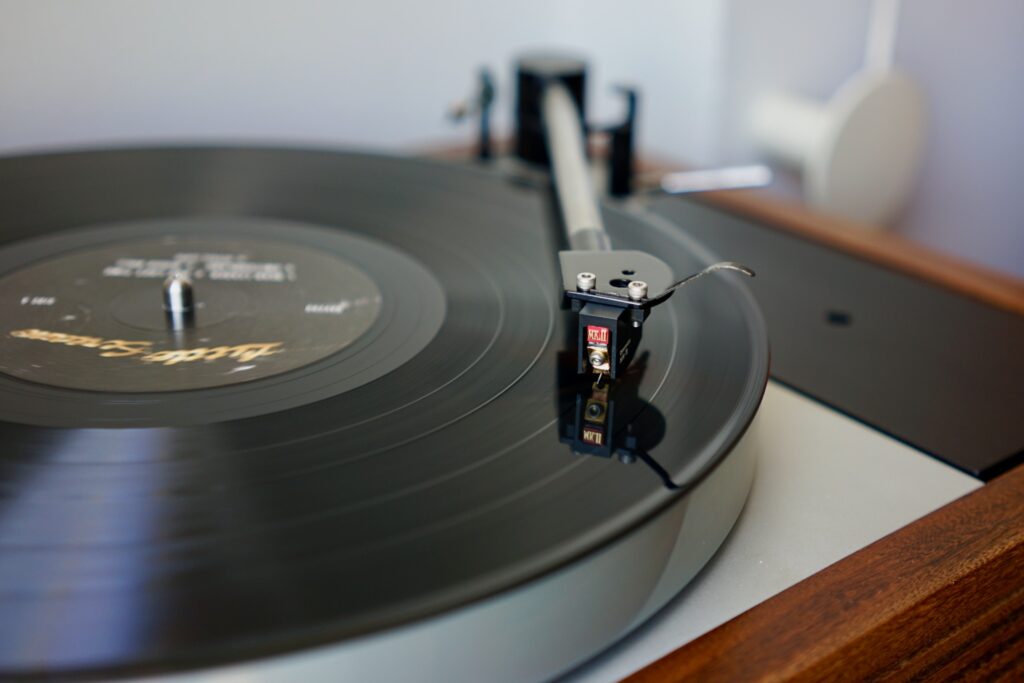
The problem was that I couldn’t test the Troika with the Aro, because my Greenstreet subchassis has the wrong spindle-pivot distance for the Troika, and the Aro doesn’t allow any adjustment for alignment or overhang. So I would have to test it with the XX-2, which matches the Greenstreet/Aro geometry much better. I will write much more on all this when I introduce the Greenstreet/Aro themselves. But for now, suffice it to say that in order to compare the Javelin and the Aro, I would need to do a full listening test with the XX-2 in place on both. Which is how I find myself here.
Well, at least it won’t take me very long to summarize the findings! Reaffirming my preference for the Troika in the Ekos 2, I also found that things moved slightly backward when I put in the XX-2. The XX-2’s “relaxed, smooth” character made it always a very pleasant listening experience, without the hardness or edge that I sometimes found with the Troika. But this also meant that it lacked some of the snap, definition, and detail that the Troika provided. And although the XX-2 has nice bass extension, the Troika seems if anything to be little better with bass.
I found that seven of my twelve test tracks sounded worse with the XX-2, four sounded about the same, and one sounded better. Interestingly to me, the one that regressed the most was Joy Division’s “Atmosphere,” which is all about the lively toms at the start of the track. It’s a “slam” track, in other words, and the relaxed XX-2 presentation just didn’t make the same impact as the Troika. The one track that sounded better with the XX-2 was Julee Cruise’s “Rocking Back Inside My Heart,” a quiet atmospheric track that is all soft edges and dreamy glow.
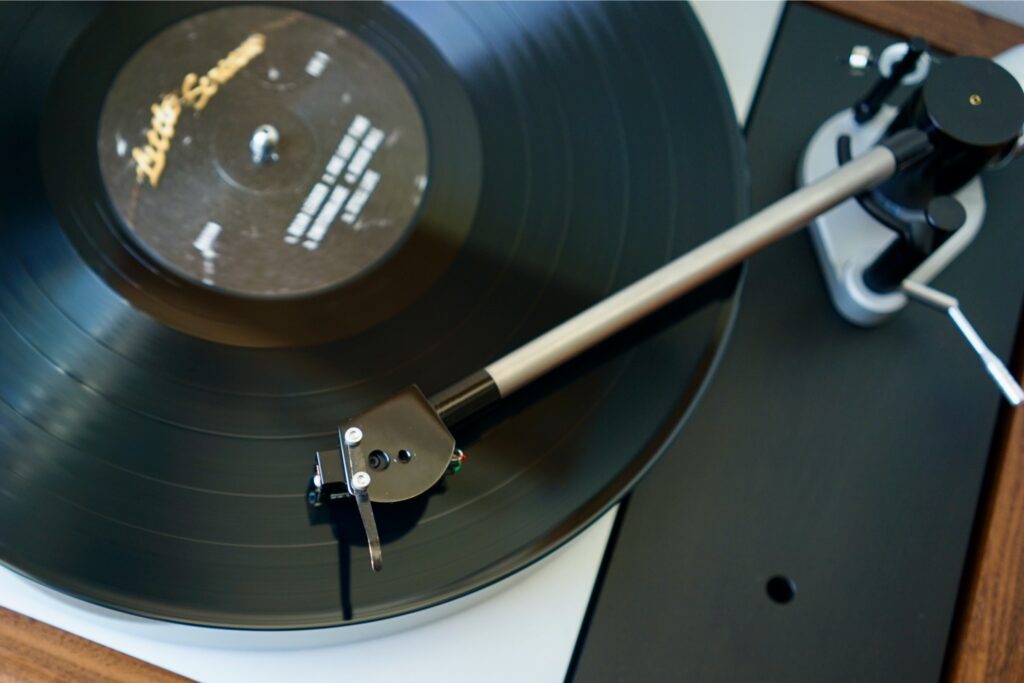
By my ranking system, things got 4.6% worse with the Troika. This is consistent with the improvement I felt the Troika made over the XX-2 on the Ekos 2 tonearm (4.2%). This doesn’t mean the XX-2 is a bad cartridge, of course: I know many people love it in their systems. In my system, with my music, for my ears, for my tastes, the Troika’s lively, snappy, but still “full” character is just a a better fit.
One thing I will say: the Dynavector looks really cool on the Javelin. As much as I am obsessed with the unusual looks of the Troika, the boxy profile of the XX-2 makes for a really nice contrast with the smooth, rounded edges of the Javelin headshell, and the all-black aluminum body works perfectly with the Javelin aesthetic.
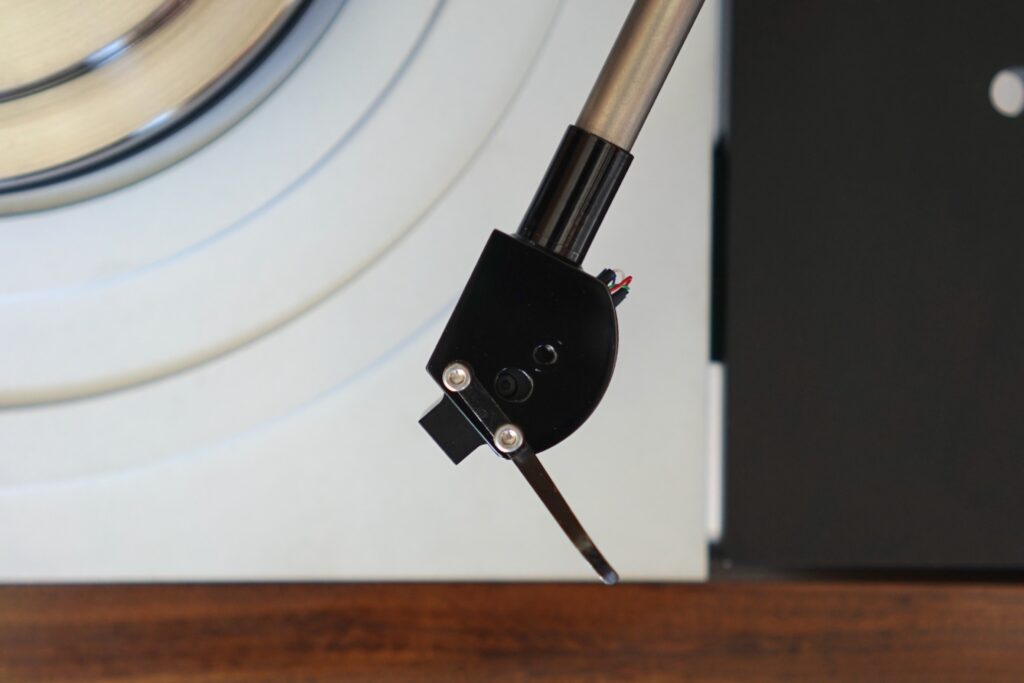
Not having to wrangle all the extra wire from the Troika’s flying leads was nice, too.
Still, if I had to pick, I think the Troika looks cooler on the Javelin. Or on any arm!
Installing the XX-2
The Javelin makes installing cartridges very easy. You disconnect the tonearm lead, remove the arm, and attack the cartridge to the two (or three) fixed holes, which permit not alignment adjustment. There it is below, carefully swaddled in a dish rag (its stylus guard should really be in place there, too — I’m a bad parent.)
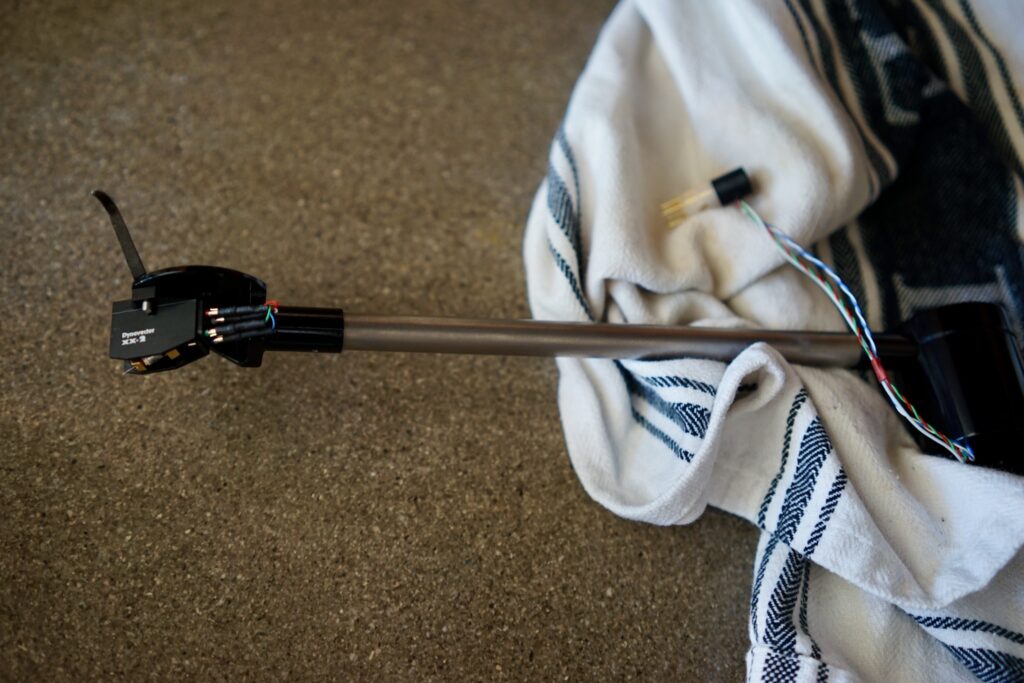
Overhang is set by rotating the offset bearing pillar. You just rotate away until it perfectly tracks the arc on your protractor. That’s what I’m up to in the photo below, using my Best Tractor.
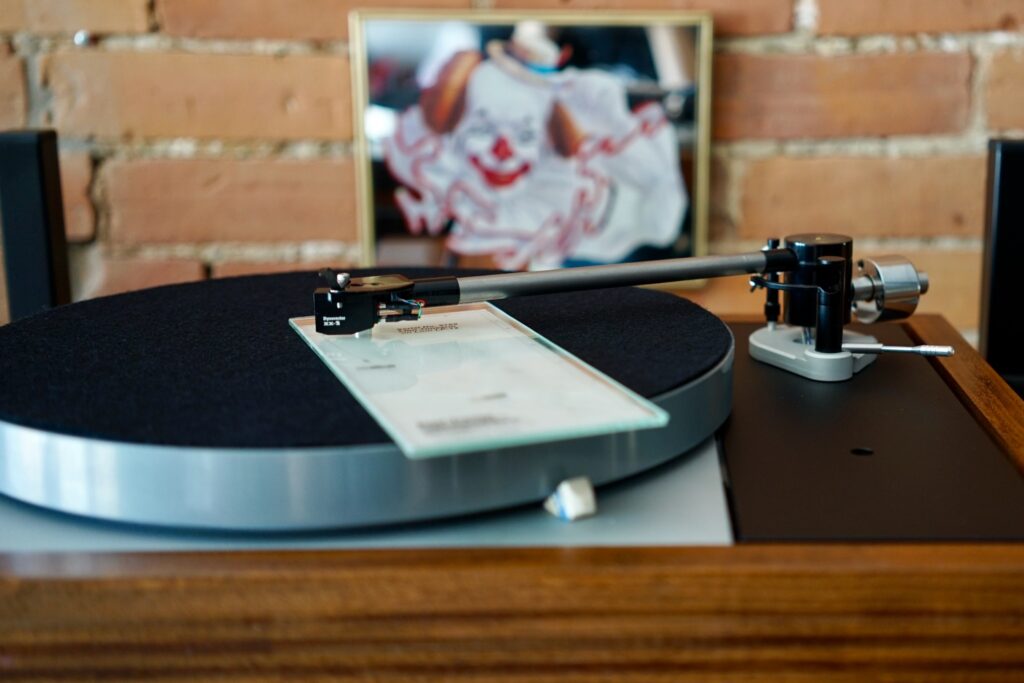
Notes on casual listening
As with the last round, there was very little “casual listening” this round. It was get it on, listen to the test track, and get on to the next step!
Test tracks
1. The Beach Boys, “I Know There’s an Answer,” Pet Sounds (1966)
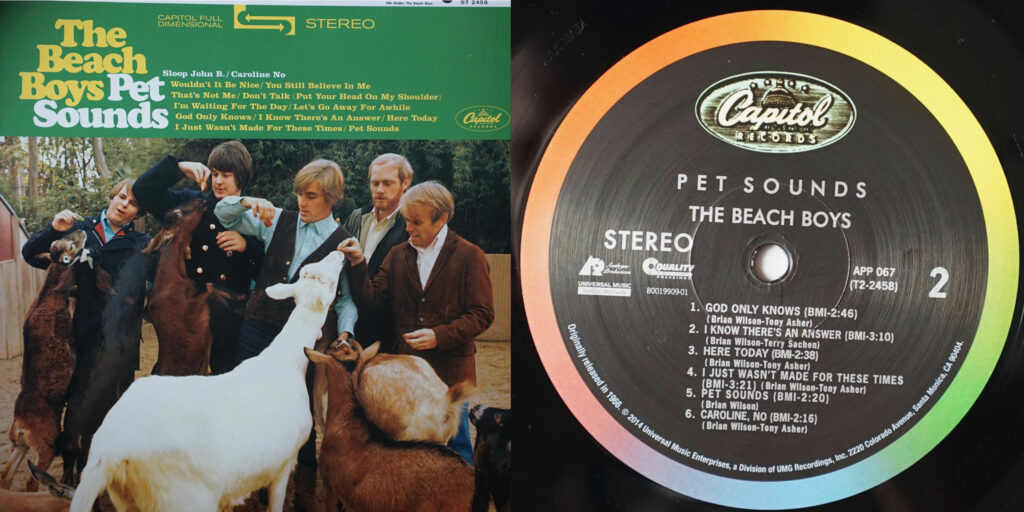
Full digital. Well, after a few days of only listening to music in my garage (too hot up in my office), this sounds good. The system out there isn’t bad but it’s not yet up to the standard of this headphone system. Detail and, especially, low-end drive sound good to me here. The shakers do sound a little shrill, though…
Full vinyl. Even more heft on the low end, way better detail on the shakers — very nice. I do think it’s missing a bit of the sharpness on the high end than I heard with the Troika, though. Here is a really scientific observation: I like the way Brian’s vocals sound. They make me feel good, in my head. But seriously, it’s that “aural umami,” that “sizzle” — which I do think is quite a bit “thicker” with the XX-2 than the Troika. Which isn’t to say that the detail is in any way lacking with the XX-2; it’s not, and the timpani in particular sound really nice here. Oooh, as does the brass at the end of the song. Really, really nice.
Slight delay. Yeah, wow, what a difference. It’s wide and full and totally in focus on vinyl, then all the edges get harsh and confusing on digital. Most noticeable on the shakers, which sound just terrible on digital But looking at my notes from last time, I do think there’s a bit of top-end snap missing here compared with last time. Whoa, the difference in presentation on the brass is astounding: so, so smooth and umami on vinyl, so harsh and thin on digital…
S-2-s. You notice two things doing direct, back-to-back comparisons, and you notice them most on Brian’s vocals: the “edges” of notes are much clearer, and they are also much smoother — the transitions from silence to sound are both better defined and smoother. The XX-2 sounds gorgeous, no doubt. Digital is slushy and vague. Still, though, I think one notch down from the Troika. (In the next track, the bass seems to be less defined than it was with the Troika. But the brass is very smooth and terrific — wow, that tuba.)
Verdict: vinyl sounds 45% better (5% regression)
2. Charles Mingus, “Track B — Duet Solo Dancers,” The Black Saint and the Sinner Lady (1963)
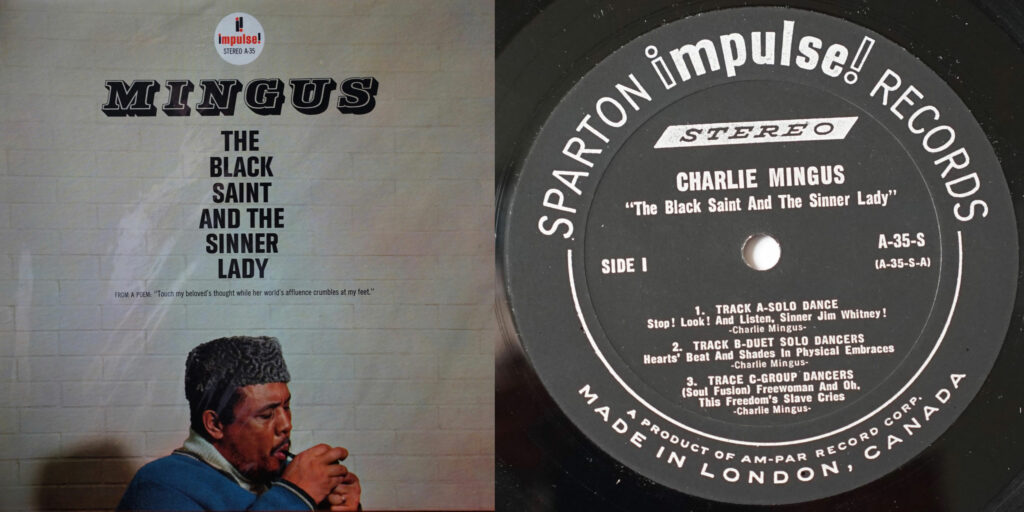
Full digital. I listened to this today in the garage. In some ways this sounds better: more force, more impact, more drive. In others, worse: on headphones, there’s just something wrong with the soundstage: it feels almost out of phase, all edges, no centre. And the cymbals sounds tizzy and there is a grating harshness to the sharper reed instruments.
Full vinyl. The “missing centre” soundstage definitely isn’t happening on vinyl: very nice wide frame. The cymbal is soft and delicate, the bass is deep. The characteristic smoothness is definitely there — maybe a bit too much so, though, as I’m not getting all the texture I like on the cordy sax, or quite as much of a slam on the duh-duh-duh-duh-duh.
Slight delay. Ugh, so gross on digital. Vinyl definite wins in absolutely all respects: much smoother, much more pleasant, much more “euphonic,” also with tons more detail and texture. I don’t feel like I’m hearing “six instruments all tied up in a knot” on the cordy sax, like I did with the Troika, so I think there’s a bit less detail and texture than last round… I think I might finally understand what PRaT means, though: when I switch to digital, the flow and pace of the music seems somehow off, I’m not quite following the beat…
S-2-s. The differences are less perceptible than last time. The digital is way too harsh; the XX-2 is just a touch too laid back for the really Freudian parts of this to come through. Exceptionally good but just a notch below last time.
Verdict: vinyl sounds 40% better (5% regression)
3. The Pentangle, “Let No Man Steal Your Thyme,” The Pentangle (1968)
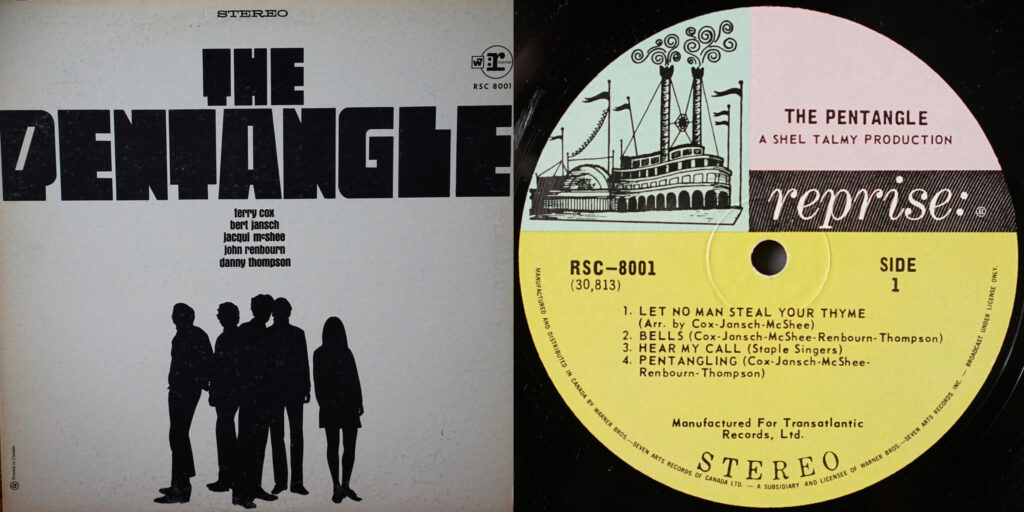
Full digital. Another one I listened to in the garage today— though it sounded absolutely amazing, with Jacqui’s vocals frighteningly lifelike; it was seriously a bit disturbing. Here, I like the texture of the bowed bass. But the textures of the acoustic guitar and rim hits/triangles aren’t what I’d like, lacking the respective springiness and eerie palpability of the best presentations.
Full vinyl. Not blowing me away like last time. A little foggy on the vocals. Lots of snap on the guitar — but I’m greedy and want more. In general, this seems lacking in springiness an snap, sharpness and life, compared with last round.
Slight delay. We’re not quite where we were las time. I think the Troika is a bit better at textures and snap. Still far more clarity and life on vinyl, but it’s just a bit too laid-back for me, and in this track that comes across as a lack of definition, of clarity, of focus. Still very pleasant to listen to — euphonic, definitely.
S-2-s. Yep, for once, vinyl could use a bit of the digital’s edginess. In the breakdown, vinyl wins massively on timbre and tone — the instruments sound right — but doesn’t have much of a lead on detail or presentation in space. I’d say 10% off last week’s performance by the Troika.
Verdict: vinyl is 25% better (10% regression)
4. Mariah, “Shinzo No Tobira,” Utakata No Hibi (1983)
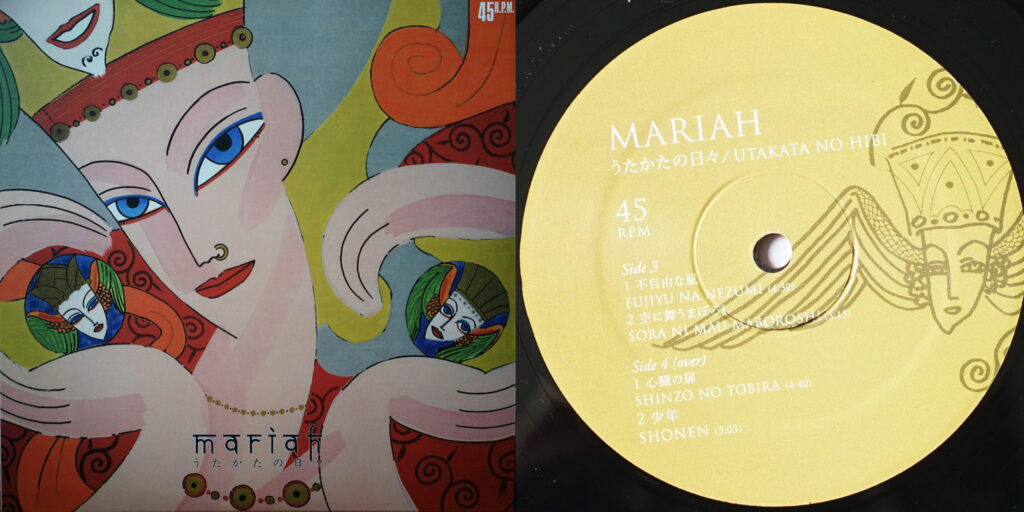
Full digital. Hmm, really not doing it for me tonight — everything feels blunted and clumsy, with no fine edges or follow-through. This track really does seem different every time I listen to it. Tonight, the shakers do not sound crisp, and the bass seems wobbly and off.
Full vinyl. Much, much better with a still somewhat blunt drum sound — but a complex bluntness so that you know that’s what was meant. Shaker detail much, much better. I was a bit underwhelmed by this one last time with the Troika, but I’m enjoying it more with the XX-2. I wonder why: more authority with the bass (tons of it, as before, just maybe a bit more under control). The vocals are properly haunting, and the eel-like weaving synths behind the vocals are really nicely palpable and defined. The analog synths are really excellent — I am getting some thrills this time — they have that gently scratchy texture I like. Really nice.
Slight delay. I was dead on about “complex bluntness”: huge difference between the two, in just that way. The kick drum, too, is barely perceptible on digital. Then, whereas the heavier bass and the light shakers coexist nicely, each doing their own thing on vinyl, they get all confused and conflated on digital. Just no subtlety or shadow on the lead vocals on digital. This is a notch up from last time, has to be 40%. As with the intro drums, iscomplexity totally lacking on the analog synth on digital.
S-2-s. Hmm, no, in direct comparison, I don’t think I can say 40%. Definitely a lot better, and based on my notes I should probably have called it 30% last round, but this is no more than 35% better than digital. I like it a lot more, for all these reasons, but I’m not getting that AM/FM radio sensation…
Verdict: vinyl is 35% better (no improvement)
5. Joy Division, “Atmosphere,” 12″ single (1980)
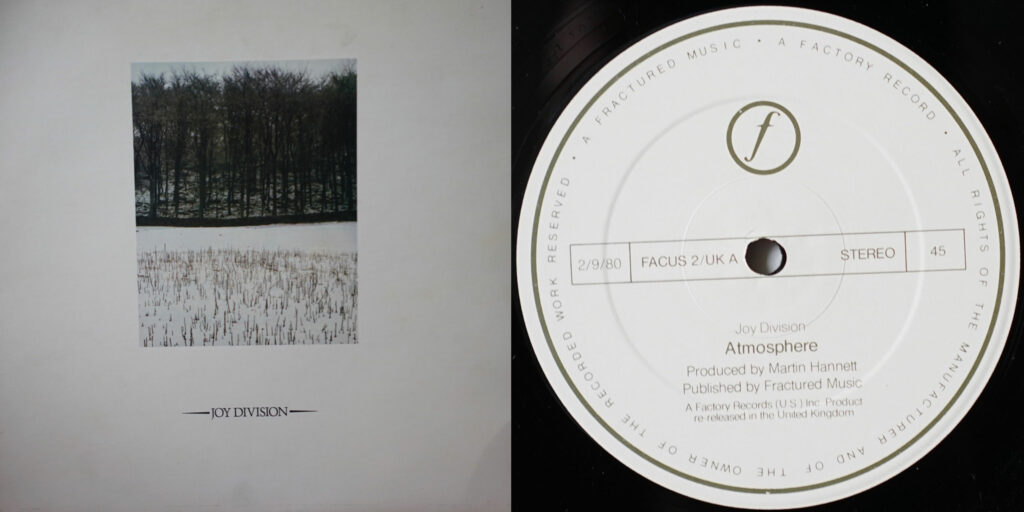
Full digital. Unusually, I am doing a listening test in the middle of the day, rather than at night. Also, I will be doing 2 x 4-song listening tests today, the result of having had a busy week and not gotten my usual evening listening tests in, combined with a desire to get the Aro/Greenstreet in tomorrow. So here we go. This track sounds pretty good on digital today — no complaints about the drum impact here. I’d thought “noisier” daytime power might annoy the Gungnir DAC, but it’s sounding quite good. Perhaps during lockdown, daytime power has improved…! Yes, the hand drum is really quite good. I’m excited to have my expectations reset by the vinyl in a moment…
Full vinyl. Hmm, I’m a little less blown away by this than last time. Or at least it seems that way. None of the “hardness” I was getting last time with the Troika, but also less of the excitement and realism I was feeling. Maybe it’s the vinyl rig that doesn’t like daytime power as much! The direct comparisons will be more revealing, I think…
Slight delay. Clearly a notch down from last time — not bad by any means, but less exciting, defined in contrast. Somewhat strangely, it’s lost a bit of bass kick compared to the Troika — I only say strange because the XX-2 is supposed to excel with bass. I mean, the bass is very good, but not as good as the Troika, clearly. Just a bit more rounded off than usual. Still, the definition and coherence of vinyl is in another league from digital, which sounds splashy and dull in comparison, a boxer in sand. More a 30% difference.
S-2-s. In direct comparison, the differences are more like 25%. Curtis’s vocals have more texture and focus on vinyl — but the usual differentiator, the toms, are not making as much of a difference as usual. Much greater coherence and clarity in the soundstage and separation of instruments, however.
Verdict: vinyl is 25% better (15% regression)
6. Low, “Just Make It Stop,” The Invisible Way (2013)
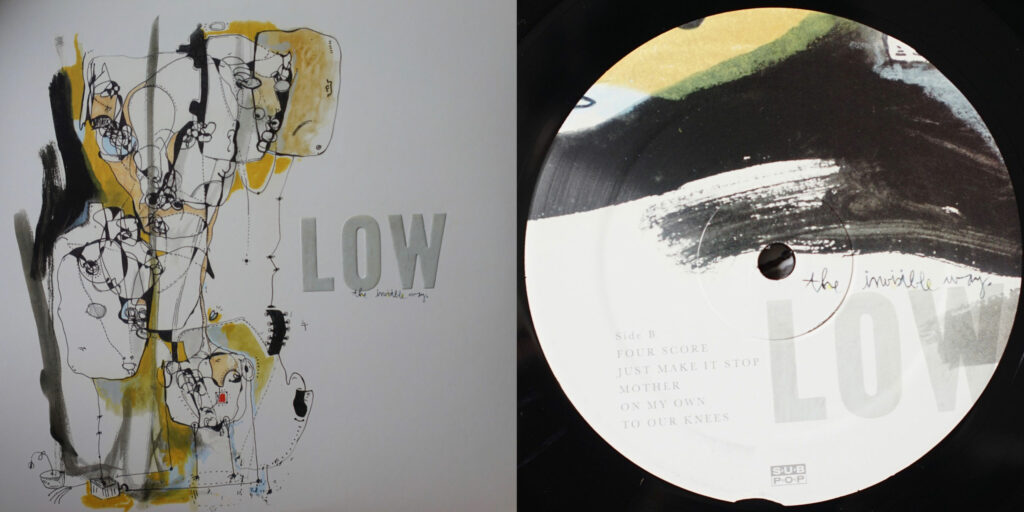
Full digital. It’s definitely a good day for digital. This track sounds quite different on different days — might just be my mood, or the weather, who knows? — but today it’s good with a nice rich low end and a wide soundstage. The vocals are a bit veiled and the cymbals sound dismal, as usual.
Full vinyl. Wow, that’s a lot better. Delicacy of cymbals, depth of bass, presence of vocals, width of soundstage — a comprehensive knockout.
Slight delay. Pathetically flat and slow, lazy on digital. So much drive on the low end on vinyl, so much delicacy on the top end, and then the texture and clarity of Mimi’s voice — amazing. The difference in the clarity and drive of the barroom piano is less than with the Troika, though — that difference indeed doesn’t stand out particularly between the two. The main difference now is definitely the texture and clarity of Mimi’s vocals — beautiful lifelike, right in the room.
S-2-s. Wow again. The snare is the big differentiator in the opening: so much more complexity to the presentation on vinyl, whereas it’s just a dull thud on digital. There’s a slightly “crowded” feel to the mid-band here — despite the terrific delicacy of the cymbals and the amazing drive of the palm-muted guitars, the vocals and piano can feel a little over-rich in comparison to digital in a few spots. So I’d say this has dropped a notch from last time, maybe two?
Verdict: vinyl is 30% better (10% regression)
7. Yo La Tengo, “Stockholm Syndrome,” I Can Feel the Heart Beating as One (1997)
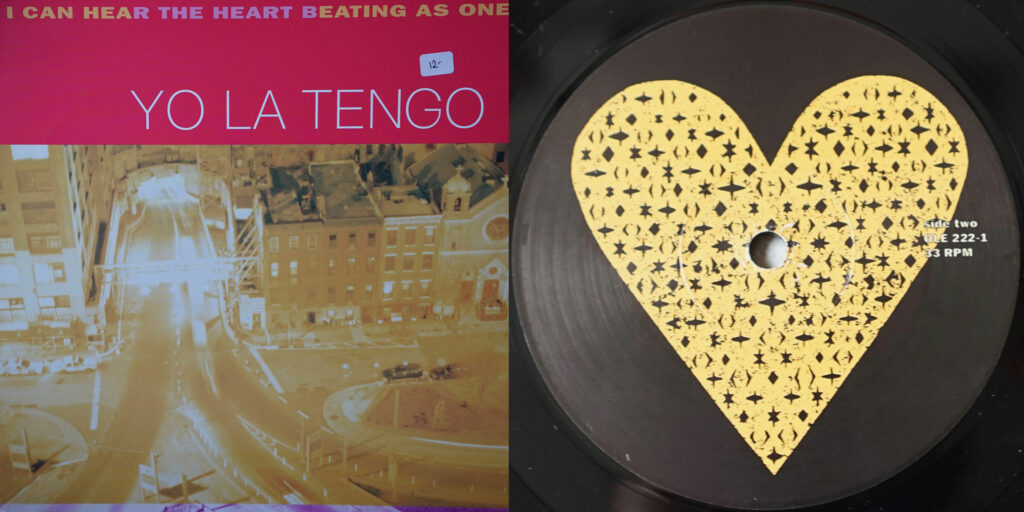
Full digital. This was a weird one last time — a rare track that sounded quite a bit worse with the Javelin than the Ekos in place. I said last time that the digital presentation was god-awful, basically. Continuing today’s trend, this doesn’t sound bad at all. Full bass, reasonably snappy acoustic guitars. James’s voice does sound quite congested, though…
Full vinyl. Comprehensively better, and clearly better than last time. Vocals are clear and in focus, guitar is snappy, bass is much better defined and “tighter.” Harmonies on the chorus are much clearer here than on vinyl. I think the clarity of James’s bass guitar and his voice are what stand out most here.
Slight delay. Much more “sparkle” around the acoustic guitar, much nicer texture and definition on the bass guitar, definitely. The vocal harmonies do indeed come across much more clearly — in space and in texture/timbre. There is, however, a bit of a “bloom” on James’s voice, especially when he gets himself into a bit of a “croon.”
S-2-s. Hmm, in direct comparison, all the above are there, but not at anything more than the 30% threshold. I’m not sure how we got all the way up to 45% at one point. Maybe I was getting a little too excited, or maybe the digital was having a bad power moment… I’m going to stick with 30% here.
Verdict: vinyl is 30% better (no change)
8. The Beatles, “While My Guitar Gently Weeps,” The White Album (1968)
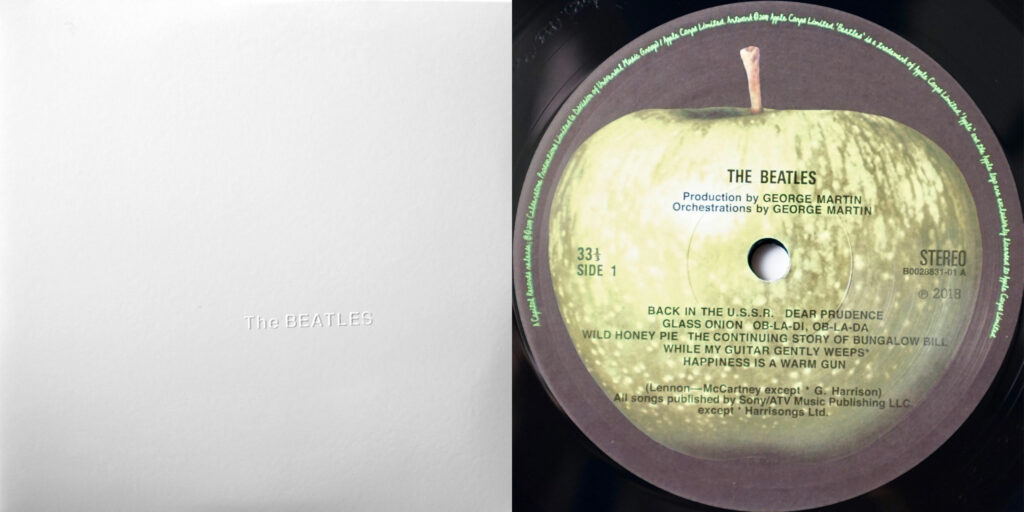
Full digital. Now this one really sounds awful on digital. So bright, harsh, grainy, unbalanced, incoherent. Yes, Paul’s bass goes really low, and the “clippetty clops” are well defined, but it all just falls apart as a combined performance — really shameful. And the top end (cymbals, acoustic guitar, lead electric guitar) is straight up nasty.
Full vinyl. Much, much, much better. Bass is fuller, top end is much smoother, everything comes together in the soundstage. The kick drum is massively better defined, as is Paul’s killer bass guitar, and the slam quotient is much increased. I’m not missing any slam from last time, I don’t think — but I do think I’m missing some of the Troika’s snap. The clippety clops are really nicely rendered, but they could “pop” a little more out of the soundstage…
Slight delay. Sure enough: amazing low-end kick, really nice detail on the clippety-clops — but missing some snap on acoustic guitar compared with the Troika.
S-2-s. This one is really easy to evaluate, because the digital version sounds so awful. Very close to the 40% AM/FM radio threshold here, but I’m going with 35% because I know that acoustic guitars sounded better with the Troika. But the bass sounds amazing with the XX-2: I’m getting a great belly-tickle from Paul’s “duh duh duh DDUUH” bass riff in the outro. There is no question that the Javelin does bass extraordinarily well — both with the Troika and the Javelin. Having just now wandered into “Happiness is a Warm Gun,” it’s pretty amazing how much drive there is on bass and kick drum…
Verdict: vinyl is 35% better (5% regression)
9. Dungen, “Panda,” Ta Det Lugnt (2004)

Full digital. The second 4-song listening session of the day begins… And, what do you know, this recording, which I often complain about, sounds really quite good today on digital.
Full vinyl. Oooh, yes, those drums definitely do sound an awful lot better on vinyl. And the presence of the vocals is amazing, as is the glassy tone of the electric guitar — wowww. This track is just amazing in every way — and so is this recording, and this performance of it.
Slight delay. Truly amazing — so rich and full and alive. Getting my beloved “aural umami” feeling — a tickle in my belly — from the muted chords on the electric guitar. Huge and wide and soaring on vinyl — just amazing. And then, switching back, you turn the saturation all the way down so that it’s nearly black and white. Right where we were last time, I think, 40%.
S-2-s. Really focusing on the aural mushroom cloud at the end of the track — yep, the life and edges and shimmer are all on vinyl, along with palpable bass you feel in your tummy. 40%.
Verdict: vinyl is 40% better (no change)
10. Julee Cruise, “Rocking Back Inside My Heart,” Floating Into the Night (1989)
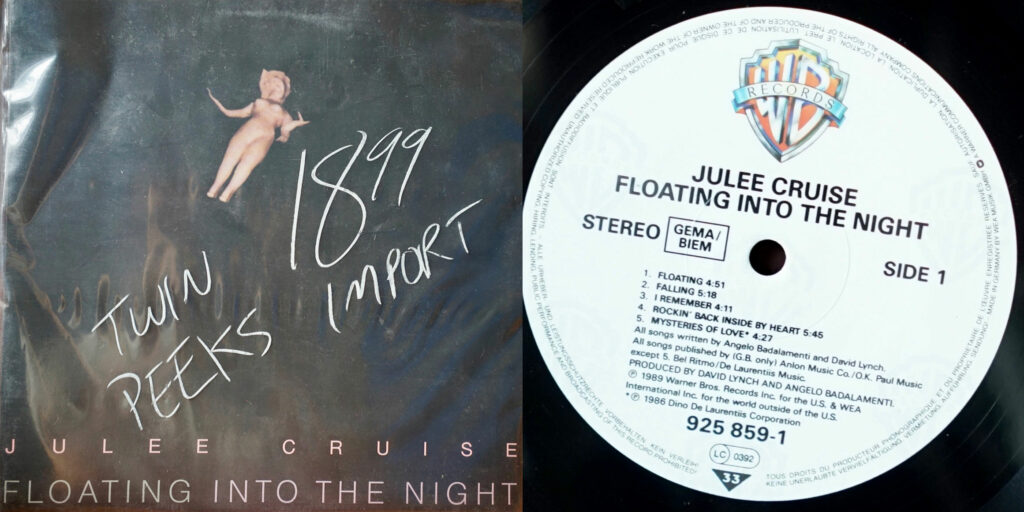
Full digital. A warm, rich, comfortable audio landscape here — it usually sounds very nice on digital, and today is no different. You only start to miss the better source when the sax breakdown comes and the texture of the sax is a little flat…
Full vinyl. Warmer and richer on the low end, with much nicer focus on Julee Cruise’s vocals, with the piano clearer and more defined in space, and gorgeously crisp palm mutes. No doubt this sounds a lot nicer than digital. Last time I complained that things were maybe a bit bass-heavy and that the sax breakdown was a little flat. Not tonight! This is sounding amazing, apparently better than with the Troika…
Slight delay. The advantages of vinyl — bass drive, clarity on vocal, piano, and palm mutes — are very, very apparent here. We’re edging right up against the 40% threshold, in fact. Bass weight/drive are the main differentiators — and then the timbre of the sax is just absolutely wrong on digital.
S-2-s. The clarity and decay of finger-snaps, the lively timbre of electric guitar (that’s gotta be a Strat) — all much more apparent. The bass region is just so much more pleasing on vinyl — especially when the sax goes low. The main thing, though, Julee Cruise’s inimitable voice, is perfect focus on vinyl and all crusted over on digital. Beautiful stuff.
Verdict: vinyl is 35% better (5% improvement)
11. Can, “Halleluwah,” Tago Mago (1971)
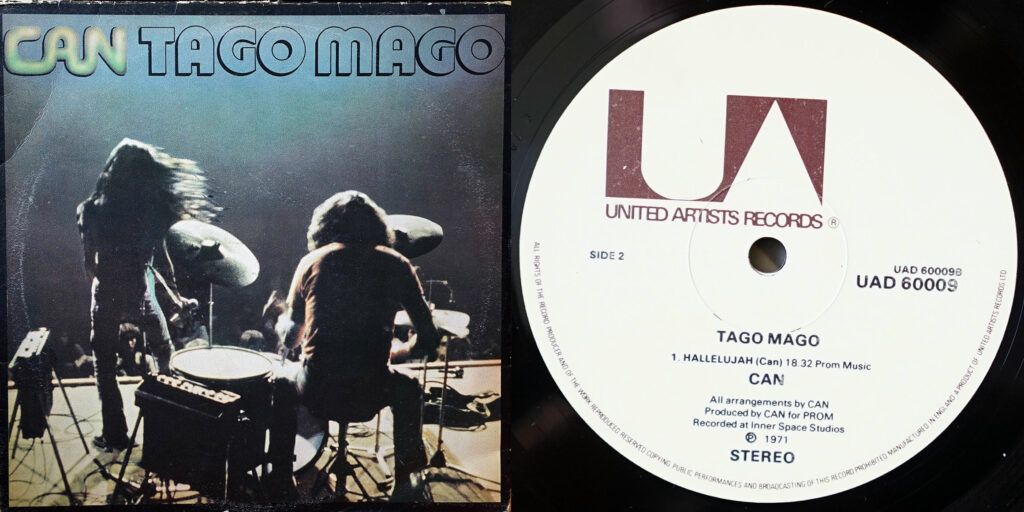
Full digital. Sounding pretty fun, to be honest. Lots of drive and snap. And this is a good time to remind myself how much I love this song, and that it is more than just a “test track” to me…
Full vinyl. Sweet Lord this sounds good! Astounding, body-shaking bass, total clarity on the guitar (another Strat!), huge soundstage and atmosphere. Detail, emotion, impact — this presentation definitely has it all. (Though, reading over for my notes from last time, it sounds like it did last round, too!)
Slight delay. The list of ways that this vinyl presentation destroys the digital is just a list of how music reproduction can be evaluated: drive, tone, space, detail, coherence. This is as good as I’ve heard this track — though, again, reading through, no better that last time. The Javelin loves this track! Very hard to listen to it on digital: it sounds glassy, about to shatter.
S-2-s. Glassy, harsh, painful to listen to at times on digital. Then just great at everything on vinyl, as I’ve said. I’m totally sold: this is as good as I’ve heard this. The thing I’m enjoying most tonight is the clear, ringing texture of the electric guitar.
Verdict: vinyl is 40% better (no change)
12. Bill Callahan, “Javelin Unlanding,” Dream River (2013)
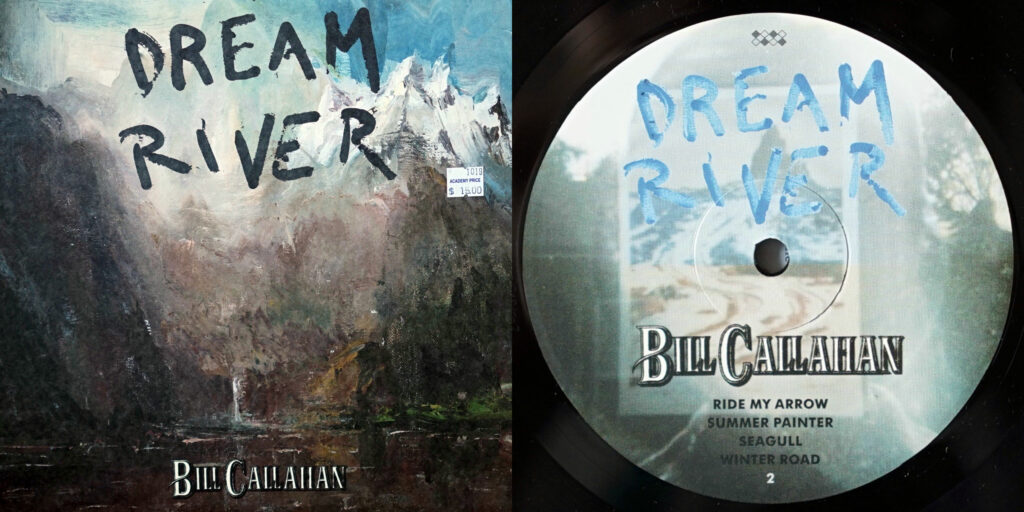
Full digital. Lousy-sounding, as usual. Flat and pixellated, lacking the lifelike textures on guitar that I was just enjoying up there ^^. Shamefully bad.
Full vinyl. Yep, the contrast between the deliberately flat sounds and the sharply-defined ones is very clear here. Is there maybe a bit too much “bloom” in BC’s voice? Really nice contrast of delicacy and richness (between cymbals/hi-hat and BC’s voice). Might be just a touch richer than what I’d like… A little bit too much umami!
Slight delay. In direct comparison, clearly not as good as last time. Not making as clear a contrast between the flat and the sharp sounds — so, hand drums and guitars not as nicely rendered, and space not as wide or defined. Strangely, it seems to have no advantage in terms of bass versus the digital, either, in quantity at least. It gets the tones of the instruments and of BC’s voice much better than digital, but definitely not as well as the Troika did last round.
S-2-s. The XX-2 is definitely missing some resolution, clarity, and texture versus the Troika. The hand drums are “popping” more than digital, but less than last round. We’re down to about 30%.
Verdict: vinyl is 30% better (10% regression)
Next steps
True to my nature, the next step has already been taken: the Greenstreet is in, the Aro sits aloft it, and at its tip is the XX-2. Indeed, I’m listening to them blow some Kraftwerk very loud into my new Yamaha NS-1000M loudspeakers in my garage…
